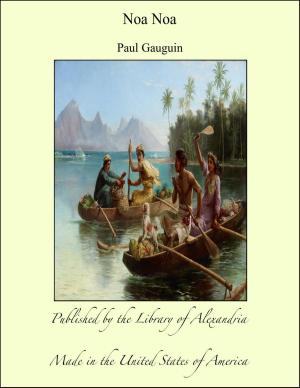Your National Parks With Detailed Information for Tourists
Nonfiction, Religion & Spirituality, New Age, History, Fiction & Literature| Author: | Enos A. Mills & Laurence F. Schmeckebier | ISBN: | 9781465584366 |
| Publisher: | Library of Alexandria | Publication: | March 8, 2015 |
| Imprint: | Language: | English |
| Author: | Enos A. Mills & Laurence F. Schmeckebier |
| ISBN: | 9781465584366 |
| Publisher: | Library of Alexandria |
| Publication: | March 8, 2015 |
| Imprint: | |
| Language: | English |
St. Louis had a memorable "flag day" a little more than a century ago. Within twenty-four hours the yellow and red flag of Spain was run down and the tricolor run up; this hauled down and the Stars and Stripes run up. The Louisiana Territory thus became a part of the United States. In a flash, the western boundary of this country was changed from the Mississippi River to the Rocky Mountains. Scarcely were the Stars and Stripes flying, before Lewis and Clark were on their way to explore the vast and mysterious Louisiana Territory—the West. Theirs was one of the most comprehensive and successful exploring expeditions on record—one of the greatest of outdoor expeditions. There were adventures and hardships, but after two years the party returned to civilization with the loss of only one man. The resources of the great West were definitely placed before the world. This expedition revealed the extraordinary resourcefulness of Lewis and Clark and brought out also two other characters who are worthy of a place in American literature and whose achievements might well be a source of inspiration in American life. These are John Colter, who afterwards discovered the Yellowstone, and Sacagawea, the "bird woman." Sacagawea was the one woman of the Lewis and Clark expedition. She rendered remarkable service, and her name will be forever associated with exploration, with woodcraft, and with the National-Park wildernesses. Just before the returning Lewis and Clark expedition reached St. Louis, it met trappers starting up the river—going into the great West. This was the real beginning of the trapping industry, which for nearly two generations was the dominating influence of the West. The West was thoroughly explored by the trappers. In a number of States they formed the first permanent settlement. The trappers harvested the furs of lakes and streams throughout the mountains and built up the "Commerce of the Prairies." We are indebted to them for the Oregon and Santa Fé trails. All history shows no more picturesque or resourceful character than the trapper. Among them were such great men as John Colter, James Bridger, and Kit Carson.
St. Louis had a memorable "flag day" a little more than a century ago. Within twenty-four hours the yellow and red flag of Spain was run down and the tricolor run up; this hauled down and the Stars and Stripes run up. The Louisiana Territory thus became a part of the United States. In a flash, the western boundary of this country was changed from the Mississippi River to the Rocky Mountains. Scarcely were the Stars and Stripes flying, before Lewis and Clark were on their way to explore the vast and mysterious Louisiana Territory—the West. Theirs was one of the most comprehensive and successful exploring expeditions on record—one of the greatest of outdoor expeditions. There were adventures and hardships, but after two years the party returned to civilization with the loss of only one man. The resources of the great West were definitely placed before the world. This expedition revealed the extraordinary resourcefulness of Lewis and Clark and brought out also two other characters who are worthy of a place in American literature and whose achievements might well be a source of inspiration in American life. These are John Colter, who afterwards discovered the Yellowstone, and Sacagawea, the "bird woman." Sacagawea was the one woman of the Lewis and Clark expedition. She rendered remarkable service, and her name will be forever associated with exploration, with woodcraft, and with the National-Park wildernesses. Just before the returning Lewis and Clark expedition reached St. Louis, it met trappers starting up the river—going into the great West. This was the real beginning of the trapping industry, which for nearly two generations was the dominating influence of the West. The West was thoroughly explored by the trappers. In a number of States they formed the first permanent settlement. The trappers harvested the furs of lakes and streams throughout the mountains and built up the "Commerce of the Prairies." We are indebted to them for the Oregon and Santa Fé trails. All history shows no more picturesque or resourceful character than the trapper. Among them were such great men as John Colter, James Bridger, and Kit Carson.















